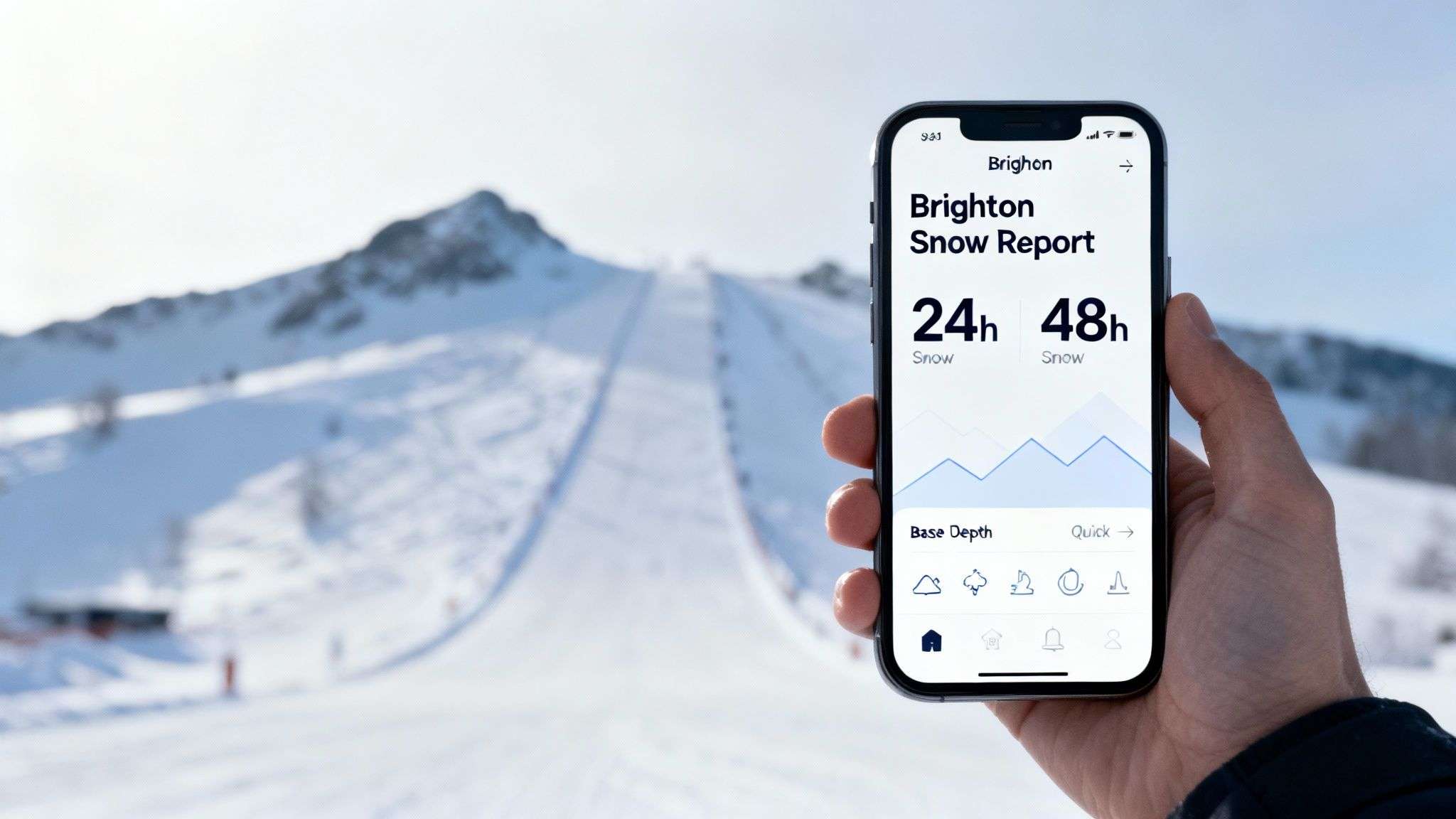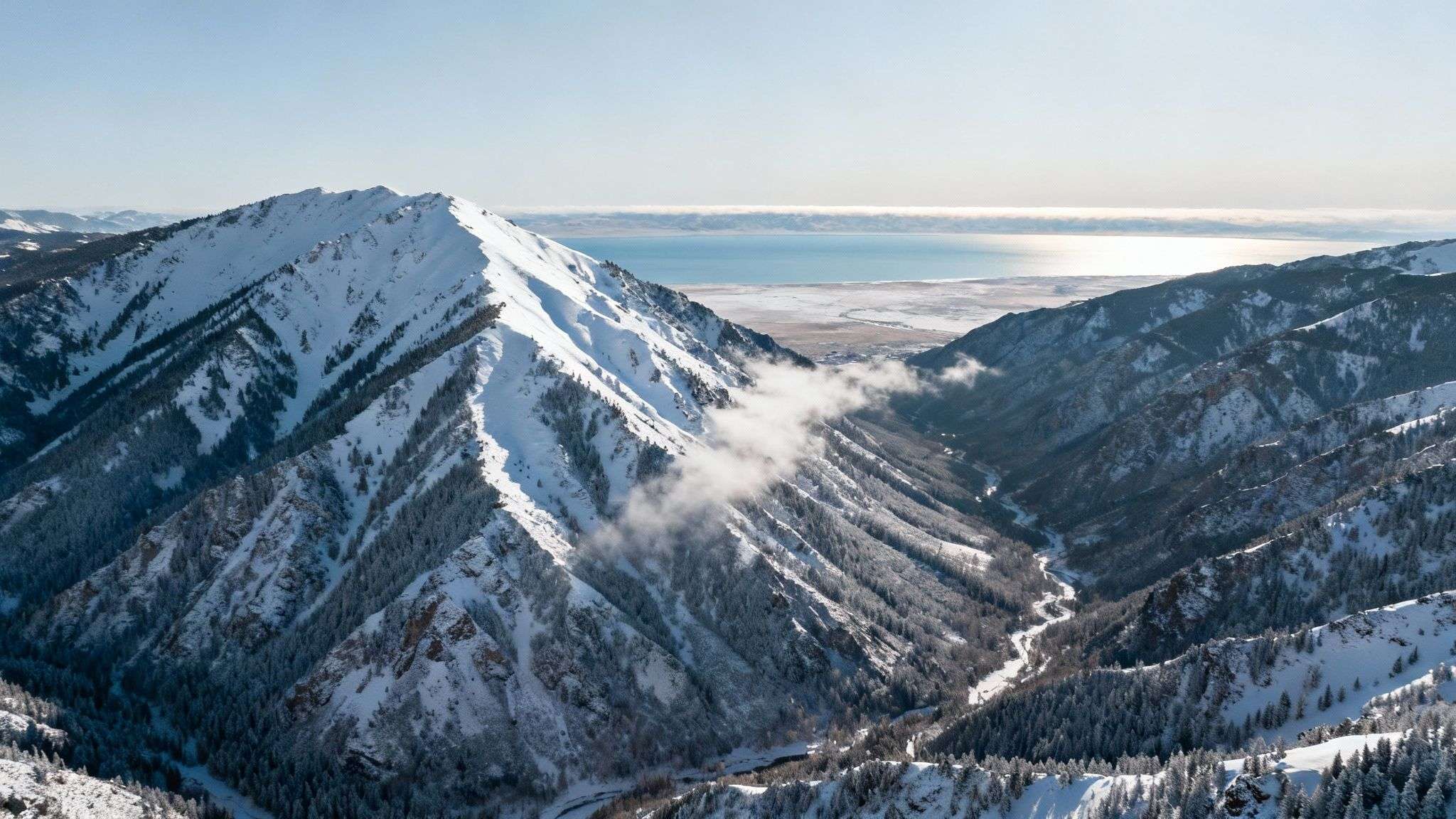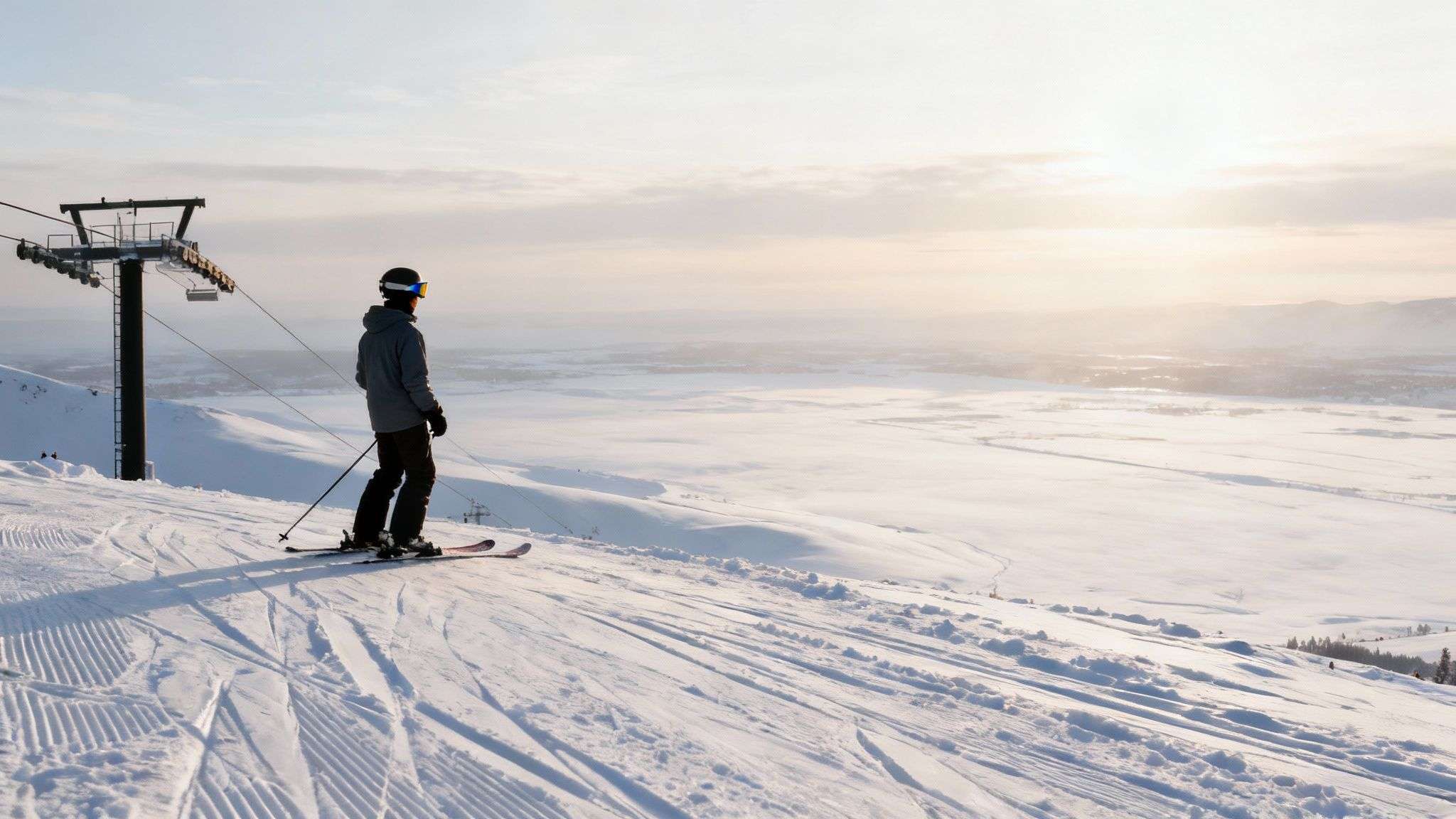Your Ultimate Guide to the Brighton Snow Report
Get the most accurate, up-to-date Brighton snow report. Our guide covers live data, historical snowfall, road conditions, and local tips for planning your perfect powder day at Brighton Resort, Utah.
Knowing the current Brighton snow report is the key to planning a perfect ski or snowboard day in Big Cottonwood Canyon. This guide explains how to read the daily report, understand Brighton's unique lake-effect snow, and use live data to find the best powder and navigate the canyon road safely.
What is the Current Brighton Snow Report?

The Brighton snow report is your daily snapshot of on-mountain conditions. It provides critical data on new snowfall, total base depth, and current weather, all measured directly at the resort. This information helps you decide what gear to bring, what terrain to expect, and whether it’s a good day to head up the canyon.
How to Read the Daily Report
To make a quick, informed decision, focus on these key metrics from our live data feeds.
| Metric | Current Data | What It Means for You |
|---|---|---|
| New Snow (24-hr) | 4" | Fresh powder is waiting. Conditions will be soft and fun. |
| Base Depth | 85" | Excellent coverage mountain-wide. Off-piste and glades are filled in. |
| Weather | 22°F, Light Snow | Dress in warm layers. Pack low-light goggles for visibility. |
| Roads | Chains/4x4 Required | Utah's traction law is active. Check Big Cottonwood Canyon conditions before you leave. |
- 24-Hour Snowfall: This is your powder indicator. Anything over 6 inches means it's a powder day.
- Base Depth: A deep base (70"+) ensures great coverage on all terrain, including expert chutes and tree runs.
- Weather: Pay attention to wind speed and temperature. High winds can lead to lift holds and wind-loaded snow.
- Road Conditions: Always check the road status. The traction law is frequently in effect. You can see real-time conditions on the live Big Cottonwood Canyon cameras.
When Does Brighton Get the Best Snow?

Brighton's legendary powder comes from its prime location at the top of Big Cottonwood Canyon, which captures moisture from the Great Salt Lake. This "lake effect" snow machine delivers an average of over 500 inches of light, dry powder annually.
The Lake-Effect Snow Machine
The magic happens when cold, dry air moves over the relatively warm, salty water of the Great Salt Lake. The air picks up moisture and, as it's forced up and over the Wasatch Mountains (a process called orographic lift), it cools and dumps that moisture as famously light "champagne" powder.
This geographical advantage is why Brighton has such consistent and deep snow. The resort's high elevation ensures cold temperatures that preserve snow quality, making it one of the most reliable spots for powder in North America. To see how seasons compare, you can explore Brighton's historical snowfall data.
Best Time of Year for Powder
While great snow can fall anytime from November to April, the peak season for deep powder days is typically January through early March. During this period, storm cycles are most frequent and temperatures are coldest, producing the highest quality snow. For a detailed week-by-week outlook, check our comprehensive ski resort weather forecast.
How to Get to Brighton on a Powder Day

Getting to Brighton is the final piece of the puzzle. The drive up Big Cottonwood Canyon (SR-190) can be challenging during a storm, so understanding the road rules and having a plan is essential.
Complying with Utah's Traction Law
When it's snowing, UDOT will activate the traction law. This is not optional. To proceed up the canyon, your vehicle must meet these requirements:
- 4WD/AWD vehicles must have M+S (Mud + Snow) or 3PMSF (Three-Peak Mountain Snowflake) rated tires.
- 2WD vehicles must have 3PMSF-rated tires.
Police actively enforce this law to prevent accidents and closures. Driving an improperly equipped vehicle can result in a significant fine and ruin the day for everyone behind you. Always check the latest status on our Big Cottonwood Canyon conditions page.
Actionable, Local Tips for the Drive
- Arrive Early: To beat the infamous "red snake" of traffic, aim to be at the mouth of the canyon by 7:00 AM, especially on a weekend powder day.
- Parking Fills Fast: Brighton’s lots are often full by 8:30 AM. If you arrive later, be prepared to park down the road and walk.
- Ride the UTA Ski Bus: The easiest way to avoid traffic and parking stress is to take the bus. Park at a designated lot in the valley and enjoy a hassle-free ride.
Make Sure You're Looking at Brighton, Utah
A quick search for "Brighton snow report" can lead you astray. There's a Mt. Brighton in Michigan that gets about 38 inches of snow a year and a Brighton, UK, that rarely sees any. Always specify "Brighton, Utah" in your search to ensure you're getting data for our world-class resort, not Michigan's modest snow climate on OnTheSnow.com.
Insider Tips for Your Day at Brighton

You’ve read the snow report and made it up the canyon. Here’s how to make the most of your day.
- Where to Find Powder: On a powder morning, avoid the crowds at Crest Express and head straight for Snake Creek or Great Western Express. These lifts access steeper terrain and tree runs like Sawbuck and Pioneer, which hold fresh snow longer.
- What Gear to Bring: Layer your clothing (base, mid, and shell) to adapt to changing weather. Low-light goggle lenses (rose or yellow) are essential for visibility during storms.
- When to Eat: The lodges are busiest between 12:00 PM and 1:30 PM. Grab an early lunch around 11:30 AM or a late one after 2:00 PM to spend more time on the slopes and less time in line.
Brighton Snow Report FAQ
Do I really need 4WD to get to Brighton?
On stormy days when the traction law is in effect, you absolutely need a 4WD/AWD vehicle with proper tires (M+S or 3PMSF) or a 2WD vehicle with 3PMSF snow tires. On clear, dry days, any car can make the drive. Always check the Big Cottonwood Canyon road conditions page before you go.
How accurate is the Brighton snow report?
The official report from the resort is highly accurate for on-mountain measurements. For forecasting, it's wise to cross-reference with other sources like the National Weather Service or a specialized service like OpenSnow to get a more complete picture of an incoming storm.